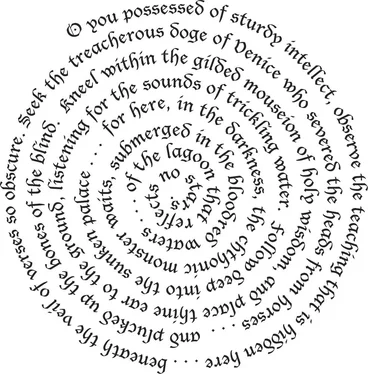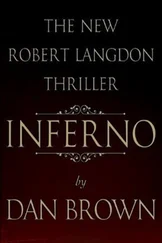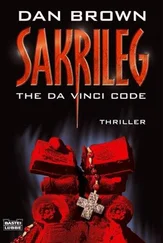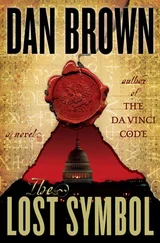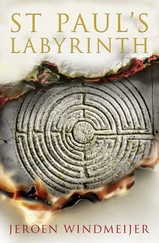Dan Brown - Inferno - A Novel
Здесь есть возможность читать онлайн «Dan Brown - Inferno - A Novel» весь текст электронной книги совершенно бесплатно (целиком полную версию без сокращений). В некоторых случаях можно слушать аудио, скачать через торрент в формате fb2 и присутствует краткое содержание. Год выпуска: 2013, ISBN: 2013, Издательство: Doubleday, Жанр: Старинная литература, на английском языке. Описание произведения, (предисловие) а так же отзывы посетителей доступны на портале библиотеки ЛибКат.
- Название:Inferno: A Novel
- Автор:
- Издательство:Doubleday
- Жанр:
- Год:2013
- ISBN:978-0-385-53786-5
- Рейтинг книги:4 / 5. Голосов: 1
-
Избранное:Добавить в избранное
- Отзывы:
-
Ваша оценка:
- 80
- 1
- 2
- 3
- 4
- 5
Inferno: A Novel: краткое содержание, описание и аннотация
Предлагаем к чтению аннотацию, описание, краткое содержание или предисловие (зависит от того, что написал сам автор книги «Inferno: A Novel»). Если вы не нашли необходимую информацию о книге — напишите в комментариях, мы постараемся отыскать её.
Inferno: A Novel — читать онлайн бесплатно полную книгу (весь текст) целиком
Ниже представлен текст книги, разбитый по страницам. Система сохранения места последней прочитанной страницы, позволяет с удобством читать онлайн бесплатно книгу «Inferno: A Novel», без необходимости каждый раз заново искать на чём Вы остановились. Поставьте закладку, и сможете в любой момент перейти на страницу, на которой закончили чтение.
Интервал:
Закладка:
According to Wikipedia, Esfandiary’s boldest claim was that new technologies would enable him to live to be a hundred years old, a rarity for his generation. As a display of his confidence in future technology, Fereidoun M. Esfandiary changed his name to FM-2030, a code name created by combining his first and middle initials along with the year in which he would turn one hundred. Sadly, he succumbed to pancreatic cancer at age seventy and never reached his goal, but in honor of his memory, zealous Transhumanist followers still paid tribute to FM-2030 by adopting his naming technique.
When the provost finished reading, he stood up and walked to the window, staring blankly out at the ocean for a long moment.
“So,” he finally whispered, as if thinking aloud. “Bertrand Zobrist’s lover—this FS-2080—is obviously one of these … Transhumanists .”
“Without a doubt,” Sinskey replied. “I’m sorry I don’t know exactly who this FS-2080 is, but—”
“That was my point,” the provost interrupted, still staring out to sea. “I do know. I know exactly who it is.”
CHAPTER 74
The air itself seems fashioned of gold .
Robert Langdon had visited many magnificent cathedrals in his life, but the ambience of St. Mark’s Chiesa d’Oro always struck him as truly singular. For centuries it had been claimed that simply breathing the air of St. Mark’s would make you a richer person. The statement was intended to be understood not only metaphorically, but also literally.
With an interior veneer consisting of several million ancient gold tiles, many of the dust particles hovering in the air were said to be actual flecks of gold. This suspended gold dust, combined with the bright sunlight that streamed through the large western window, made for a vibrant atmosphere that helped the faithful attain both spiritual wealth and, provided they inhaled deeply, a more worldly enrichment in the form of gilding their lungs.
At this hour, the low sun piercing the west window spread out over Langdon’s head like a broad, gleaming fan, or an awning of radiant silk. Langdon could not help but draw an awestruck breath, and he sensed Sienna and Ferris do the same beside him.
“Which way?” Sienna whispered.
Langdon motioned toward a set of ascending stairs. The museum section of the church was on the upper level and contained an extensive exhibit devoted to the Horses of St. Mark’s, which Langdon believed would quickly reveal the identity of the mysterious doge who had severed the animals’ heads.
As they climbed the stairs, he could see that Ferris was struggling again with his breathing, and Sienna caught Langdon’s eye, which she had been trying to do for several minutes now. Her expression was cautionary as she nodded discreetly toward Ferris and mouthed something Langdon couldn’t understand. Before he could ask her for clarification, though, Ferris glanced back, a split second too late, for Sienna had already averted her eyes and was staring directly at Ferris.
“You okay, Doctor?” she asked innocently.
Ferris nodded and climbed faster.
The talented actress , Langdon thought, but what was she trying to tell me?
When they reached the second tier, they could see the entire basilica spread out beneath them. The sanctuary had been constructed in the form of a Greek Cross, far more square in appearance than the elongated rectangles of St. Peter’s or Notre-Dame. With a shorter distance from narthex to altar, St. Mark’s exuded a robust, sturdy quality, as well as a feeling of greater accessibility.
Not to appear too accessible, however, the church’s altar resided behind a columned screen topped by an imposing crucifix. It was sheltered by an elegant ciborium and boasted one of the most valuable altar-pieces in the world—the famed Pala d’Oro . An expansive backdrop of gilded silver, this “golden cloth” was a fabric only in the sense that it was a fused tapestry of previous works—primarily Byzantine enamel—all interwoven into a single Gothic frame. Adorned with some thirteen hundred pearls, four hundred garnets, three hundred sapphires, as well as emeralds, amethysts, and rubies, the Pala d’Oro was considered, along with the Horses of St. Mark’s, to be one of the finest treasures in Venice.
Architecturally speaking, the word basilica defined any eastern, Byzantine-style church erected in Europe or the West. Being a replica of Justinian’s Basilica of the Holy Apostles in Constantinople, St. Mark’s was so eastern in style that guidebooks often suggested it as a viable alternative to visiting Turkish mosques, many of which were Byzantine cathedrals that had been turned into Muslim houses of worship.
While Langdon would never consider St. Mark’s a stand-in for the spectacular mosques of Turkey, he did have to admit that one’s passion for Byzantine art could be satisfied with a visit to the secret suite of rooms just off the right transept in this church, in which was hidden the so-called Treasure of St. Mark—a glittering collection of 283 precious icons, jewels, and chalices acquired during the looting of Constantinople.
Langdon was pleased to find the basilica relatively quiet this afternoon. There were still throngs of people, but at least there was room to maneuver. Weaving in and out of various groups, Langdon guided Ferris and Sienna toward the west window, where visitors could step outside and see the horses on the balcony. Despite Langdon’s confidence in their ability to identify the doge in question, he remained concerned about the step they’d have to take after that—locating the doge himself. His tomb? His statue? This would probably require some form of assistance, considering the hundreds of statues housed in the church proper, the lower crypt, and the domed tombs along the church’s north arm.
Langdon spotted a young female docent giving a tour, and he politely interrupted her talk. “Excuse me,” he said. “Is Ettore Vio here this afternoon?”
“Ettore Vio?” The woman gave Langdon an odd look. “Sì, certo, ma—” She stopped short, her eyes brightening. “Lei è Robert Langdon, vero?!” You’re Robert Langdon, aren’t you?
Langdon smiled patiently. “ Sì , sono io . Is it possible to speak with Ettore?”
“Sì, sì!” The woman motioned for her tour group to wait a moment and hurried off.
Langdon and the museum’s curator, Ettore Vio, had once appeared together in a short documentary about the basilica, and they had kept in touch ever since. “Ettore wrote the book on this basilica,” Langdon explained to Sienna. “Several of them, actually.”
Sienna still looked strangely unnerved by Ferris, who stayed close while Langdon led the group across the upper register toward the west window, from which the horses could be seen. As they reached the window, the stallions’ muscular hindquarters became visible in silhouette against the afternoon sun. Out on the balcony, wandering tourists enjoyed close contact with the horses as well as a spectacular panorama of St. Mark’s Square.
“There they are!” Sienna exclaimed, moving toward the door that led to the balcony.
“Not exactly,” Langdon said. “The horses we see on the balcony are actually just replicas. The real Horses of St. Mark’s are kept inside for safety and preservation.”
Langdon guided Sienna and Ferris along a corridor toward a well-lit alcove where an identical grouping of four stallions appeared to be trotting toward them out of a backdrop of brick archways.
Langdon motioned admiringly to the statues. “Here are the originals.”
Every time Langdon saw these horses up close, he couldn’t help but marvel at the texture and detail of their musculature. Only intensifying the dramatic appearance of their rippling skin was the sumptuous, golden-green verdigris that entirely covered their surface. For Langdon, seeing these four stallions perfectly maintained despite their tumultuous past was always a reminder of the importance of preserving great art.
Читать дальшеИнтервал:
Закладка:
Похожие книги на «Inferno: A Novel»
Представляем Вашему вниманию похожие книги на «Inferno: A Novel» списком для выбора. Мы отобрали схожую по названию и смыслу литературу в надежде предоставить читателям больше вариантов отыскать новые, интересные, ещё непрочитанные произведения.
Обсуждение, отзывы о книге «Inferno: A Novel» и просто собственные мнения читателей. Оставьте ваши комментарии, напишите, что Вы думаете о произведении, его смысле или главных героях. Укажите что конкретно понравилось, а что нет, и почему Вы так считаете.
